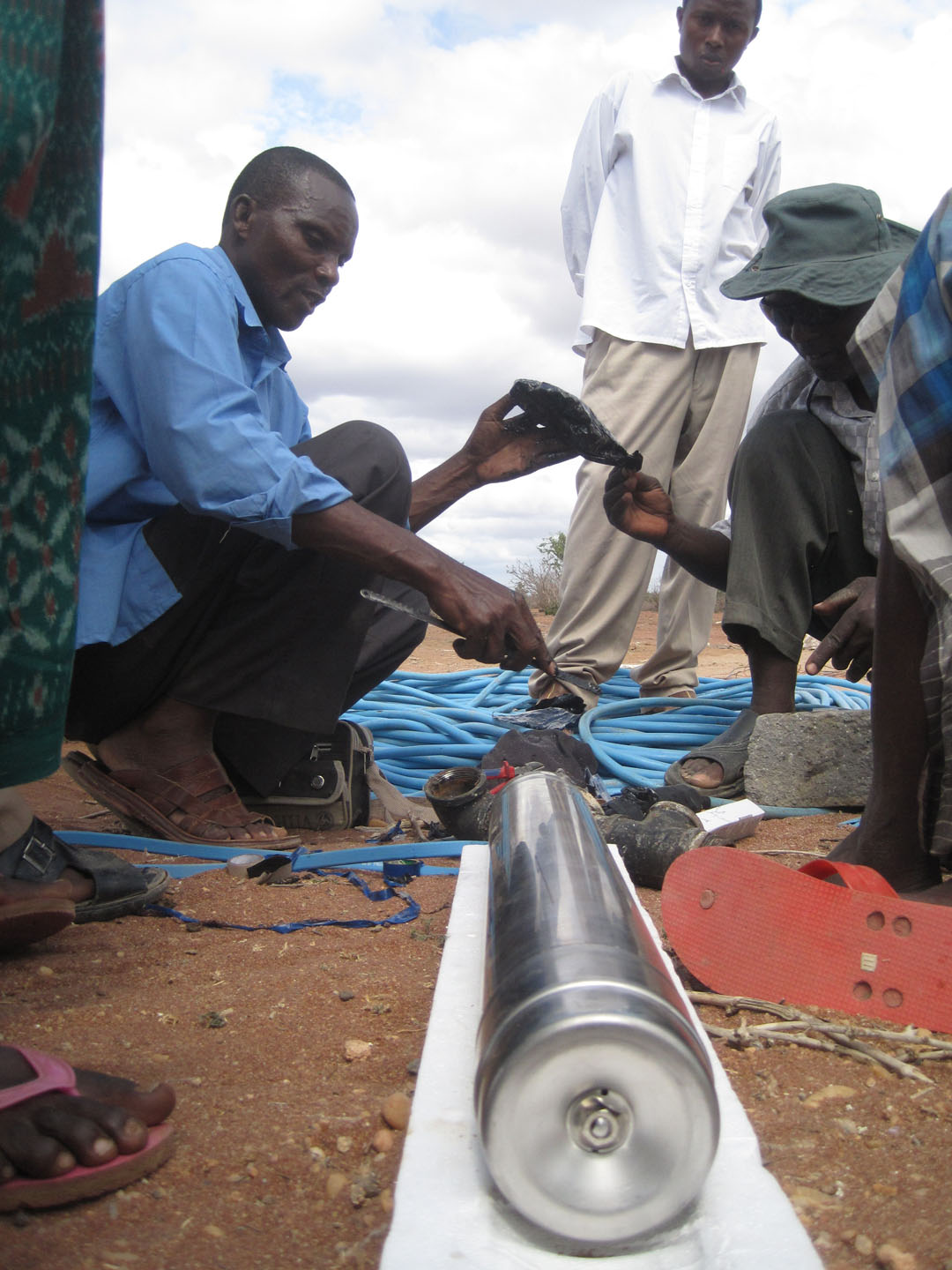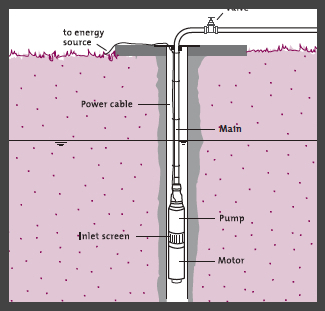Submersible pump
| |
|
|
|
|
|
|
|
|
|

For deep-well applications, centrifugal pumps are housed with the electric engine in a single unit that is designed to be submerged. Usually, a multiple-stage pump is used. The multiple-stage pump is placed above a motor and under a check valve that leads to the rising main. Submersible pumps are self-priming, if they do not run dry. To prevent the pump from running dry, the water level in the well must be monitored, and pumping must be stopped if the water level drops to the intake of the pump.
Power is delivered through a heavily insulated electricity cable connected to a switch panel at the side of the well. The power may come from an AC mains connection, a generator, or a solar power system.
Contents
Suitable conditions
Range of depth: 7–200 m or more.
Efficiency range: 40–70%.
Trademarks: Guinard; Goulds; Grundfos; KSB; Meyers; and others.
Construction, operations and maintenance
During pumping, the water flow and power consumption should be monitored. If the water is turbid only during the first stages of pumping, the rising main is corroding. If the turbidity continues after the first stages, the well must be cleaned or the pump will wear quickly. Running hours, problems, servicing, maintenance and repairs should be reported in a logbook.
The pump and rising main should be removed from the well and inspected annually. The inlet screen, check valve and pipe threads should be examined, and corroded or damaged threads re-cut. Badly corroded pipes should be replaced. Electric cables should be inspected, particularly the insulation between the cables. All other repairs, such as replacing a pump stage, involve high costs and must be carried out by a qualified technician.
Submersible pumps are not suitable for village-level maintenance, although they can often function for years with hardly any maintenance. The local committee or water agency should focus on the training and reliability of the caretaker, on cost-recovery, and on being able to mobilize an area mechanic quickly, in case the pump breaks down.
Potential problems
— sand or other particles may enter the pump and cause abrasion damage;
— the rising main may corrode;
— the pipeline system can be damaged by the severe pressure surges that result when the pump is started or stopped abruptly;
— the main limitations of a submersible centrifugal pump are its price, the need to maintain a reliable supply of electricity or fuel, and the high level of technology involved.
Costs
A pump for a 50–100 m head, and a flow rate of 10 m3/h, costs about US$ 2500 (1995 prices); a pump for the same head range and an output of 45 m3/h costs about US$ 7000.
Manuals, videos and links
These videos by the Pan Himalayan Grassroots Development Foundation are not about recharging groundwater, but rather, building a well near an underground water source using a submersible pump:
An overview (English) |
details (Hindi), Part 1 |
details (Hindi), Part 2 |
Acknowledgements
- Brikke, François, and Bredero, Maarten. Linking technology choice with operation and maintenance in the context of community water supply and sanitation: A reference document for planners and project staff. World Health Organization and IRC Water and Sanitation Centre. Geneva, Switzerland 2003.

